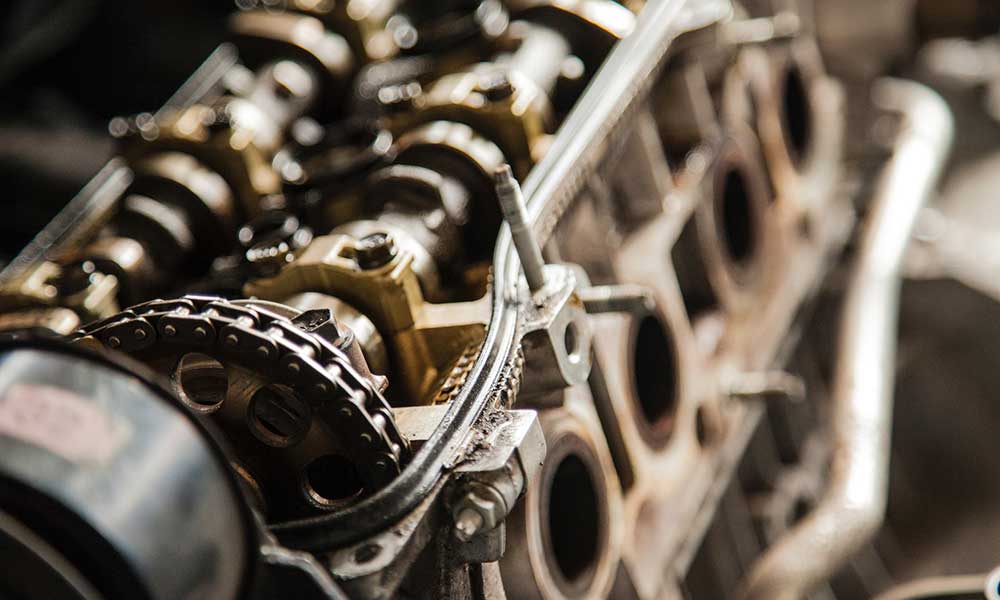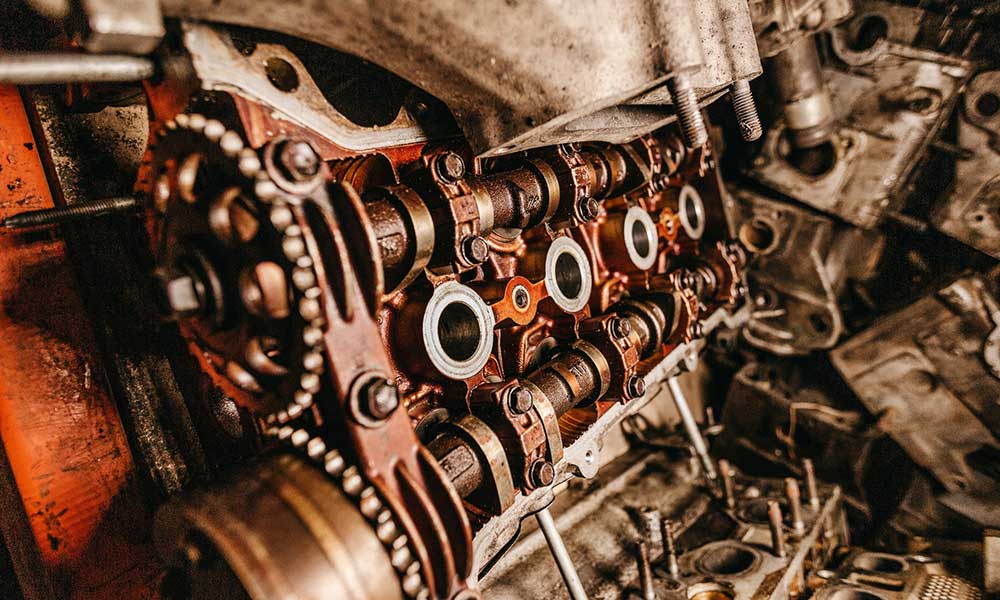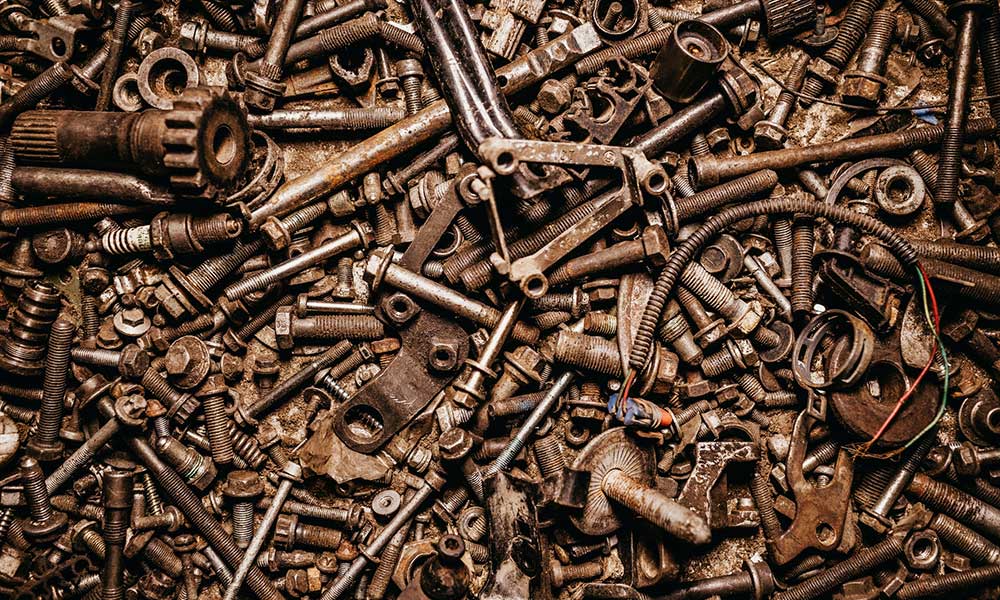When the check engine light comes on in your car, instant panic may occur because you’re anticipating an expensive repair. Let’s explore why your car’s check engine light may be on.
Why Is My Check Engine Light On?
The check engine light can illuminate for some of the following reasons:
- Faulty or failing oxygen sensor
- Damaged or stolen catalytic converter
- Missing gas cap, or damage or loose gas cap
- Dirty mass airflow sensor or one that is malfunctioning
- Faulty ignition coils, spark plug, or spark plug wires
- A bad tank of gas
- Faulty emissions equipment
- Engine, ignition system, or transmission problems
- Overheating
Understanding Your Check Engine Light
Your check engine light, also referred to as the malfunction indicator lamp (MIL), is a signal from your car’s engine that there’s a malfunction. The check engine light could be nothing but a minor or more serious issue. In the case of a minor problem, it could be a faulty gas cap. A more severe issue would be a misfiring engine. In either scenario, you’ll be visiting an auto shop to have the problem repaired. Once the issue is corrected, the light will turn off. The check engine light can be yellow or orange, depending on the manufacturer.
Solid vs. Flashing Check Engine Light
When the check engine light is solid, this indicates a malfunction that must be addressed, not an emergency. In this scenario, you can continue to drive your vehicle. However, you need to have it checked promptly by a professional.
If the check engine light is flashing, this is an indication that there is a more serious malfunction. Serious car malfunctions can cause the catalytic converter to overheat, which poses a fire hazard.
Reasons for Check Engine Light Activation
As we previously mentioned, there are different reasons your check engine light illuminates. Let’s look at some of the most common reasons for check engine light activation.
Damaged Oxygen Sensor
Problems with an oxygen sensor could result from contamination, high mileage, electrical issues, or age. It’s a good idea to replace unheated oxygen sensors every 30,000 miles. Heated oxygen sensors should be replaced every 60,000 miles. This problem can affect your car’s fuel economy, power, response, and overall engine performance. If you notice black exhaust fumes, engine hesitation, stalling, or rough idling, a damaged oxygen sensor could be the cause.
Malfunctioning Catalytic Converter
A malfunctioning catalytic converter can result in catalytic converter failure, which can be caused by a clogged filter, poor engine maintenance, and restricted exhaust flow. If a malfunctioning catalytic converter is an issue, your car may experience poor engine performance or a melted or broken converter. You may also smell rotten eggs.
Ignition System Issues
Issues with your car’s ignition system can stem from various malfunctions, such as worn or spark plugs or faulty ignition coils. Common ignition system issues can include the following:
- Rotor and distributor cap malfunctions
- Crank position sensor failure
- Cam position sensor failure
- A broken key in the ignition
- The ignition module failing
- Distributor pick-up coil or hall effect sensor failure
Evaporative Emission Control System (EVAP) Concerns
The EVAP system is crucial because it prevents fuel vapors from escaping, aiding with reducing air pollution, and it helps with the combustion of the engine, ensuring fuel is used as best as possible. Issues with the EVAP can be caused by the following:
- Leaks in the system
- Faulty purge valve
- Damaged charcoal canister
- Faulty vent control valve
Using an OBD-II Scanner to Diagnose Check Engine Light Causes
You can use an OBD-II scanner to diagnose the cause of the check engine light in your car by completing the following steps:
- Identify your vehicle’s Diagnostic Link Connector (DLC) (usually under the dashboard).
- Power your vehicle off and plug your OBD-II scanner or code reader into the DLC.
- Turn your car on and wait for the scanner to boot
- Enter the required information on the scanner screen (the vehicle’s make and model)
- Press the scan button, then wait for the scanner to read the codes from the engine.
- Write down the codes and look them up in your car’s manual or online to identify the issue(s)
- Reset the check engine light if necessary
DIY Diagnosis vs. Professional Assistance
If you’re a DIY guru, you may not be keen on seeking professional assistance. However, professional assistance could be your best option. Let’s discuss essential considerations for both scenarios. With a DIY diagnosis, there could be many benefits and issues. As a proud DIYer, you probably don’t think you need help. However, it’s best to weigh your options.
DIY Pros and Cons
Pros
Cost Savings
You can save a lot of money when you perform maintenance on your car. DIY auto maintenance every three or four months can take a small toll, but it can save money. Since you’re making the repairs yourself, you’ll save money on labor costs.
Minimizing Issues
Completing basic repairs can reduce repair costs and minimize breakdowns. You can also extend your vehicle’s life and increase passenger safety. You can also reduce the chances of your car breaking down and save time and money.
Cons
Specialized Tools
Some repairs that need to be made require special tools. If you don’t have these tools, you’ll have to purchase them if they are available. Some car repairs can be complicated, and these repairs require professional expertise. DIY repairs are best suited for simple tasks, not complicated ones requiring special tools and equipment.
Safety Concerns
Repairing a car can pose different safety concerns. Again, without the proper equipment, you could be putting yourself in dangerous situations and possibly be hurt.
Insurance and Warranties
If your vehicle is still under warranty or covered by an extended warranty, ensure you know the terms and conditions before making any DIY repairs. Doing so could void your warranty.
Professional Assistance Pros and Cons
Pros
Safety Concerns
Safety is a primary concern when it comes to auto repairs. DIY seems appealing because of the money you could save. However, if a mistake is made, you will end up taking it to a repair shop in the end.
Complexity of Repairs
Some repairs are more complicated than others, and mechanics have the proper tools, equipment, and parts to ensure the repairs are made correctly so your car is safe to operate.
Insurance and Warranty Coverage
If your car is still under warranty, including an extended warranty, depending on the repairs your car needs, it could be covered under the warranty. Your auto insurance could also cover these repairs, but it depends on the type of coverage you have.
Time and Resources
Repairs can take a long time; if you don’t have the time, it can take months or years to get the job done. When you have a professional do the job, you can save time and resources. Mechanics have the expertise of the quickest and most efficient way to address the issue and make the required repairs.
Guarantees
Professional maintenance, including repairs, often comes with warranties or guarantees on their work. If the same issue occurs within a specific time, you can return to the auto shop, and they will repair it. These guarantees provide peace of mind.
Cons
Cost Considerations
The cost is the most considered factor when doing the repairs yourself or hiring a mechanic. While DIY repairs can save money, it could also cost more if you make a mistake, especially with complicated repairs. When it comes to cost, professional repairs can be expensive. On the upside, you know the repairs will be made by an expert promptly.
Preventive Measures and Maintenance Tips
Proper maintenance is the best way to keep your car in good condition. Use these preventive measures and maintenance tips to help keep your vehicle in the best condition.
Timely Oil Changes
Timely oil changes can improve your car’s engine performance and extend engine longevity. Regular oil changes can have the following benefits:
- Help your vehicle achieve its peak gas mileage
- Keep the engine and engine controls properly lubricated and operating smoothly
- Maintain engine lubrication
- Keep engine components cool
- Remove engine wear sludge and other particles
- Enhance gas mileage
- Vehicle longevity
- Increase the resale value of the car
Inspecting and Replacing Spark Plugs
Inspecting and replacing spark plugs also benefits your car by increasing efficiency and the engine’s performance and improving cold starting. Other benefits of inspecting and replacing spark plugs can include the following:
- Smoother performing engine
- Improved ignition and starting characteristics
- Improved acceleration
- Enhanced fuel economy
- Lower carbon emissions
- Reduced engine misfires
- Consistent and improved combustion
- Reduced risk of catalytic converter malfunction or failure
Monitoring Exhaust System Components
Proper maintenance of the exhaust system is essential for peak engine performance and decreasing the amount of harmful emissions. In addition to monitoring exhaust system components, regularly scheduled inspections and replacing worn-out parts can aid in extending the life of the exhaust system and reduce the risk of engine damage.
When the check engine light comes on, you have a problem. However, it doesn’t mean the end of your car’s life if you get your vehicle to an auto shop promptly or make the necessary repairs as soon as possible. Use our tips to help you keep your car in tip-top shape.
FAQ
Can my car pass inspection with the check engine light on?
This answer will depend on the state and the county motor vehicle laws in the city in which you reside. Other factors that will be considered are your car’s age, gross weight, and the miles it has been driven since the last time it was inspected.
Generally, your vehicle won’t pass an emissions inspection if the check engine light stays on during the test. However, some states allow cars to pass inspection with the check engine light on if the cause is a minor issue and can be fixed quickly.
Why would my check engine light come on?
The check engine light will illuminate for different reasons, such as a faulty or loose gas cap or a faulty oxygen sensor. Other instances that can cause your check engine light to illuminate could be any of the following:
- A leak in the intake vacuum
- A malfunctioning mass airflow sensor
- Faulty ignition coils
- Worn-out spark plugs or spark plug wires
- Electrical issues
- Failing catalytic converter
- Bad alternator or battery
What Do You Do When the Check Engine Light Comes On?
You may instantly want to panic when the check engine light comes on. However, when this light illuminates on your car’s dashboard, you can do any or all of the following:
- Check your vehicle for serious problems that require immediate attention, such as overheating or low oil pressure.
- Tighten the gas cap
- Reduce your speed and load you’re towing, and avoid driving long distances
- Have a diagnostic test performed (if your vehicle has a built-in system). You can also visit a mechanic
- If the engine light blinks or flashes red, stop driving immediately and have your car serviced as soon as possible.
Will Low Oil Cause the Check Engine Light to Come On?
Yes. Although when your car’s oil levels get low, a different indicator will illuminate, low oil pressure could cause the check engine light to illuminate. Low oil pressure can decrease your car’s performance and eventually disable your car if the vehicle is not addressed correctly or in a timely manner.
How Long Can I Drive With the Check Engine Light On?
Yes. You can drive up to 100 miles when the check engine light appears. Take short-distance trips if you choose to drive your vehicle with this light on.
Why Is My Car Shaking and Check Engine Light On?
Car shaking with the engine light on is a common sign of an engine misfire. Possible causes of an engine misfire can include the following:
- Faulty or dirty fuel pump
- Bad ignition coils or spark plugs
- Worn-out air filter
- Faulty fuel injector or clogged fuel filter
- Low compression or a defective engine sensor
Why Is My Traction Control and Check Engine Light On?
When the traction control and check engine light illuminate, this can indicate a variety of problems, including the following:
- Malfunctioning wheel speed sensors
- Faulty steering angle sensor
- Malfunctioning yaw sensor
- Low tire pressure
- Unfavorable road conditions
- Manual override
- Faulty ABS
- Wiring damage
- Programming issues
Can ABS Cause the Check Engine Light to Come On?
Yes. Your vehicle has multiple diagnostic systems to help maintain optimal performance and detect issues. Any malfunction within these systems, including ABS, can cause the check engine light to illuminate.









